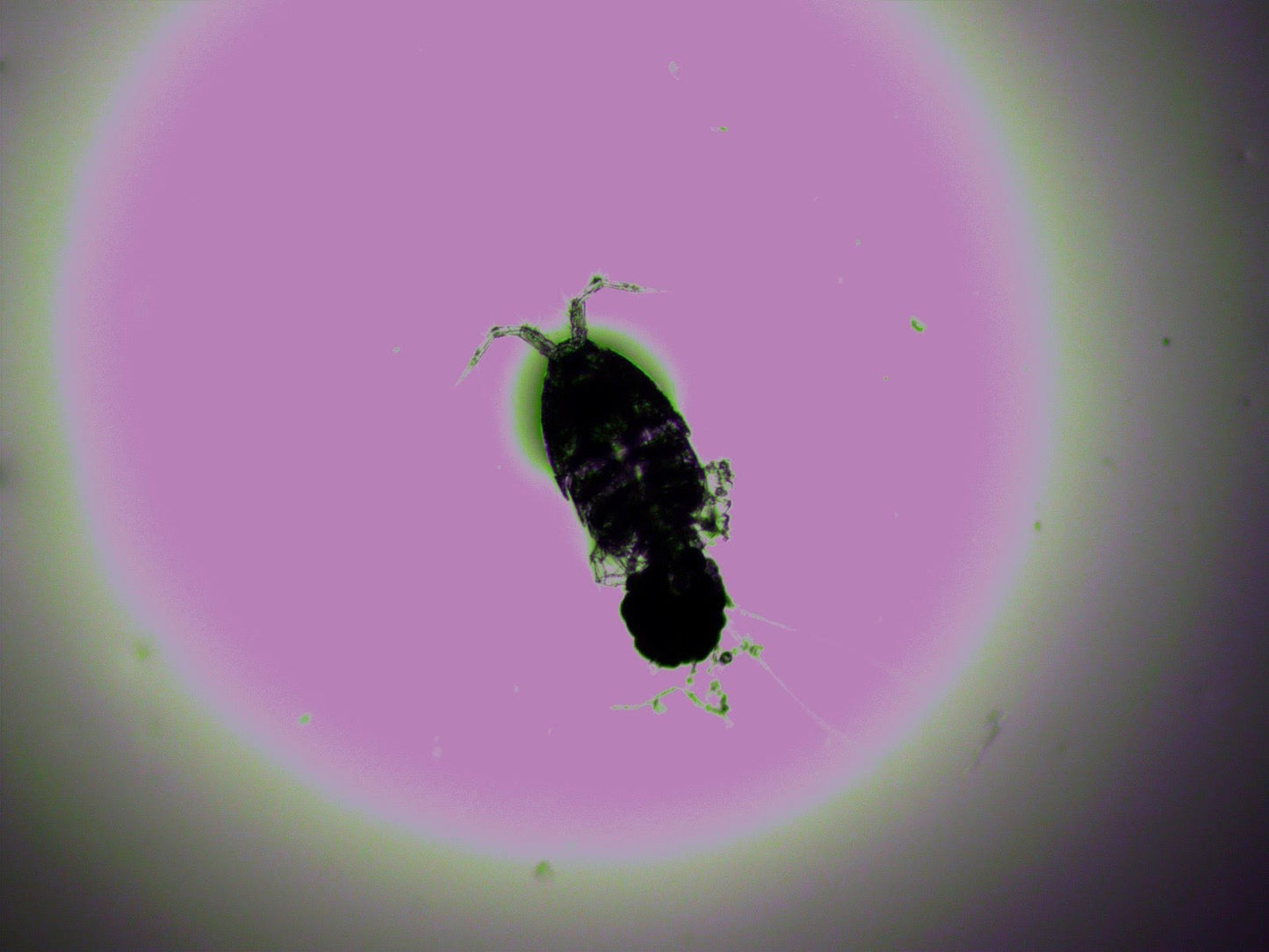BFCM 30% OFF ALL LIVE FEEDS
Every live feed is 30% off—Tisbe, Apocyclops, Rotifers, Phyto, and more. Limited-time BFCM deal!

Copepods Evolved to Devour and to be Devoured
Microalgae are the most important primary producers on the planet, because they take inorganic material and convert it into precious nutrition. This microalgal nutrition finds its way to every animal on the planet, but only after being consumed by one of the great grazers. Copepods are microcrustaceans which graze on algae in the wild and in our aquariums. If introduced and allowed to thrive, copepods will eventually establish themselves in most well-aged freshwater, brackish and saltwater aquaria. Like algae, there is a huge amount of diversity amongst the copepods, with different types/species specializing in different prey items. Harpacticoid copepods (Tisbe, Tigriopus) can be seen crawling on glass and rock work. These are adept at preying on algae attached to these surfaces. They can also crawl deep into crevices seeking detritus. In contrast, Calanoid copepods (Acartia, Parvocalanus, Pseudodiaptomus) actively swim in the water column, where they prey on suspended algae and organics. Cyclopoid copepods (Apocyclops) do a mixture of the above two behaviours but are adept at consuming ciliates and other pests. There are many more general types of copepods than these,with thousands of species, each adapted with its own tools to “clean up” algae, detritus and pests.
Today, only a handful of copepod species have been studied for direct application in aquariums. However, the species that have been embraced... are a hit!!!
Let me explain, since copepods were embraced in aquaculture the following has happened:
Why Pods are the Ideal Live Feed
In short, copepods are a godsend to the reef industry, or rather… recognizing the work copepods were already doing is the godsend. Now that the industry recognizes this powerful tool, more and more hobbyists can intentionally deploy them to stabilize all kinds of new ecosystem designs, feed the unfeedable and breed the unbreedable!
With Pods Anything is Possible
Literature Consulted
de Lima, L. C., Navarro, D. M., & Souza-Santos, L. P. (2013). Effect of diet on the fatty acid composition of the copepod Tisbe biminiensis. Journal of Crustacean Biology, 33(3), 372-381.
Marcotte, B. M. (1977). An introduction to the architecture and kinematics of harpacticoid (Copepoda) feeding: Tisbe furcata (Baird, 1837). Mikrofauna Meeresboden, 61, 183-196.
McEvoy, L. A., & Sargent, J. R. (1998). Problems and techniques in live prey enrichment. Aquaculture Association of Canada, 98(4), 2.
Nanton, D. A., & Castell, J. D. (1998). The effects of dietary fatty acids on the fatty acid composition of the harpacticoid copepod, Tisbe sp., for use as a live food for marine fish larvae. Aquaculture, 163(3-4), 251-261.
Parrish, C. C., French, V. M., & Whiticar, M. J. (2012). Lipid class and fatty acid composition of copepods (Calanus finmarchicus, C. glacialis, Pseudocalanus sp., Tisbe furcata and Nitokra lacustris) fed various combinations of autotrophic and heterotrophic protists. Journal of plankton research, 34(5), 356-375.